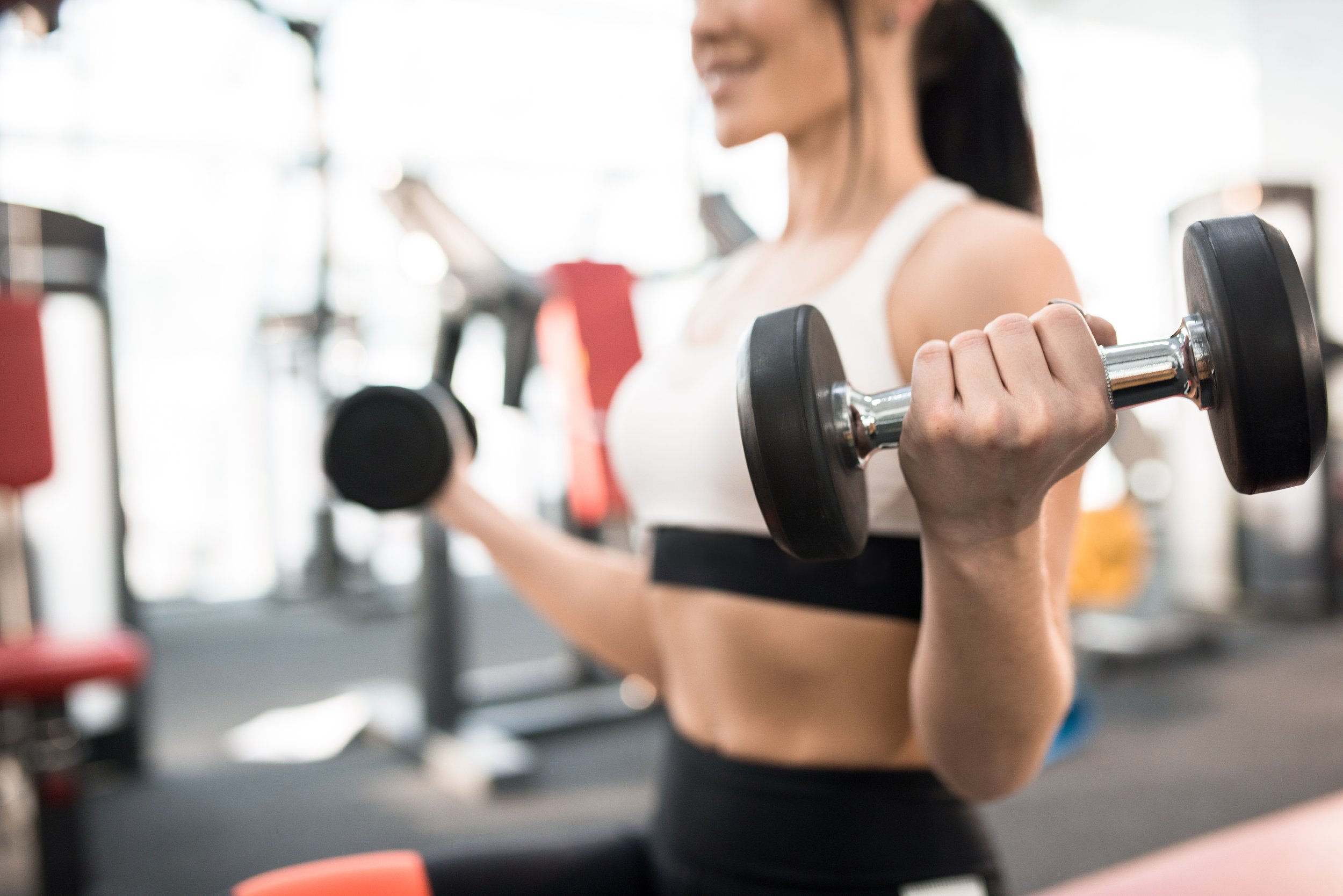How To Get The Most Out Of Your Weight Training Workout
Listen as an audio post:
How To Get The Most Out Of Your Weight Training Workout
Want to know how to maximise your returns on every single strength session at the gym? There is one core concept you need to understand to make sure you’re getting the biggest bang for your buck.
Let’s talk about the mind-muscle connection and how you can make it work in your favour.
What is the mind-muscle connection?
Whenever you are exercising, your muscles are getting messages from your brain about what to do and how to do it. However, the brain often looks for easy shortcuts – so if we’re not conscious about what we are doing during a movement, it might utilise a stronger muscle to accomplish the task!
Enter – the mind-muscle connection. This is when you consciously contract the muscle you’re targeting during an exercise. For example, when you’re doing a hip thrust, you want to engage your glutes. Otherwise, you might find yourself using your quads instead and strengthening the wrong body part!
This is particularly important in the first year or two of your training journey. Those who are newer to weight training have a reduced mind-muscle connection because they haven’t needed it. As a result, it can be harder to feel and engage a muscle when performing an exercise.
To be perfect honest, I didn’t know anything about the mind-muscle connection when I first started weight training. I spent more time over my childhood and teen years playing Sims rather than moving and being active! It’s the number one thing I wish I had learned from the beginning so I could get the most out of my movements.
How to improve your mind-muscle connection when training
Now that you know why this connection is so important, let’s take a look at how you can use it to your advantage when working out.
Choose your mental cue
With each movement, you want to stick to one or two focus points to ensure you’re engaging correctly. If you’ve ever worked with a personal trainer, you’ll know that they have a couple of reminders for each movement you do.
Some of the mental cues I use while working out include:
Romanian deadlift - push your hips back (not fold your upper body over)
Lateral raise - lead with the elbows, not the hands
Bench press - let the shoulders fall back - The goal of “let the shoulders fall back” is to maximally retract and depress your shoulder blades.
Keep your focus
This can be tricky when you’re at the gym, particularly if you can only train during peak hours. But for you to consciously focus on the movements, you need to find a way to filter out distractions. Headphones are a great way to do this, particularly if you have a playlist that has minimal lyrics.
Keep your mind on one rep at a time, and put all of your attention into that primary muscle.
Consider lighter weights
If you go too heavy too quickly, your form can suffer, meaning you can’t actively engage the correct muscle(s). Lighter weights can make it easier for you to focus on executing the movement properly.
Find a weight that allows you to slow down the tempo and actively engage your muscles.
Utilise time under tension
Time under tension is the amount of time that the muscle is under strain during a movement. The goal here is to increase the time that the major muscle is under tension. Not only does this help to boost your mind-muscle connection because you spend more time working the muscle in question, but it also leads to greater strength, endurance and muscle growth!
There are a few ways to achieve this depending on your current skill level and understanding of strength training. Some examples include:
Slower eccentric movements
Pause reps
1 ¼ reps
Tempo training
If you’re uncertain on how to use this to your advantage, it’s best to work with a coach or trainer.
Touch the muscle
By touching the muscle that you want to engage, you can direct your focus to that area and contract it consciously. With some movements, you can do this yourself. For others, you may need a training partner to draw attention to the area.
Film yourself
Sometimes, a movement might feel fine, but that doesn’t mean it is! That’s why I recommend filming yourself during a workout on a regular basis. This allows you to get an outsider's perspective on what you might be doing wrong without even realising.
Looking for nutrition tips and healthy hacks to help you feel better?
Hey there, I’m Rachel!
NUTRITIONIST, PERSONAL TRAINER, WELLNESS COACH
Here I share healthy recipe ideas, training plans, and nutrition & wellness advice you need to know.
Check out my free guide to healthy eating to design your own version of a healthy lifestyle so that you can feel energised and vibrant, or hire me to work my magic on your health through mindset, nutrition, and movement.
While we make every effort to make sure the information in this website is accurate and informative, the information does not take the place of medical advice.




